This document provides an overview of concurrent programming in Java, detailing the transition from low-level APIs to high-level concurrency objects introduced in Java 5. It covers essential concepts such as lock objects, executors, thread pools, and the fork/join framework for optimizing performance in multi-threaded applications. Additionally, it highlights concurrent collections that simplify data management and synchronization in massively concurrent applications.



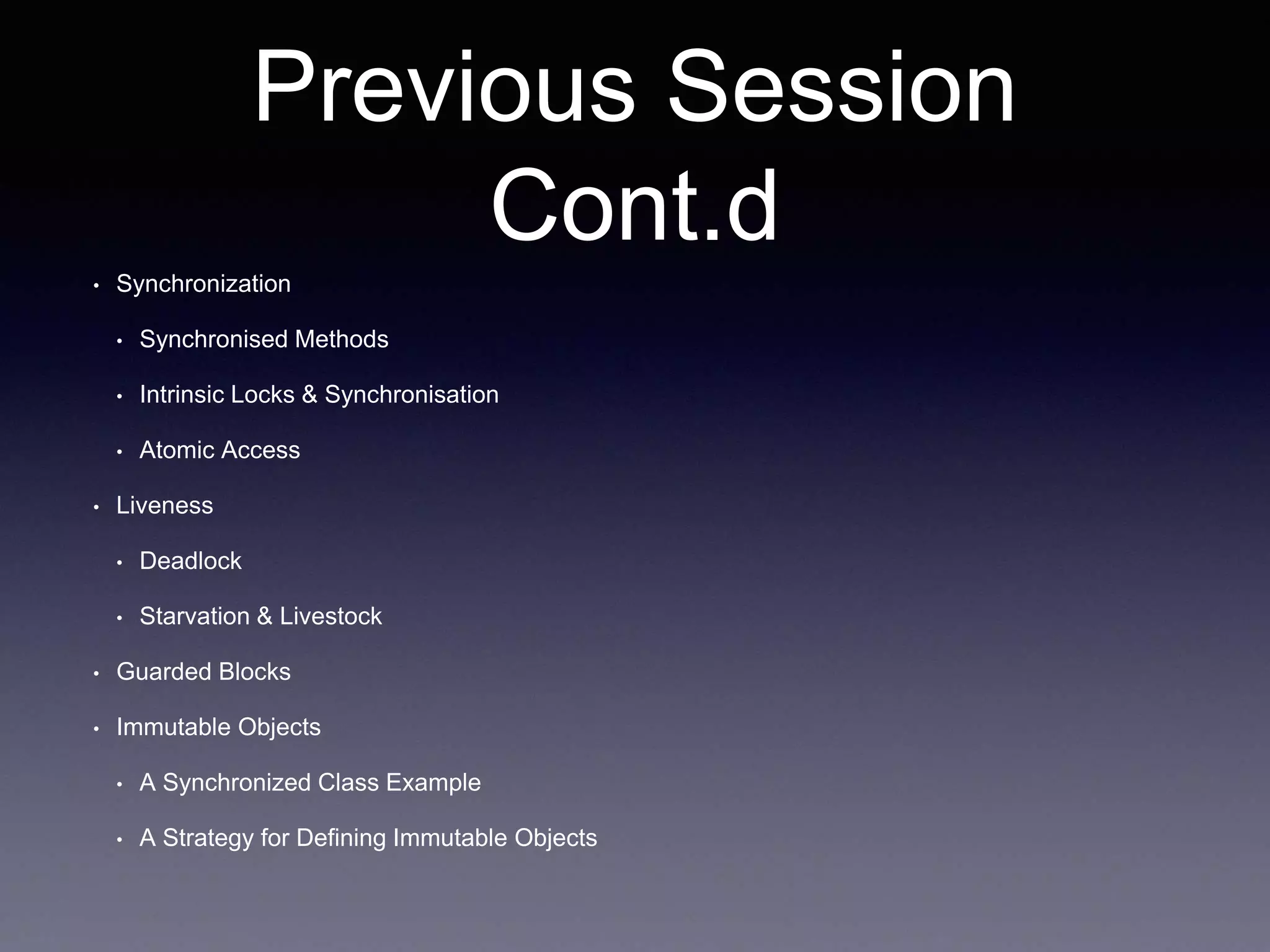

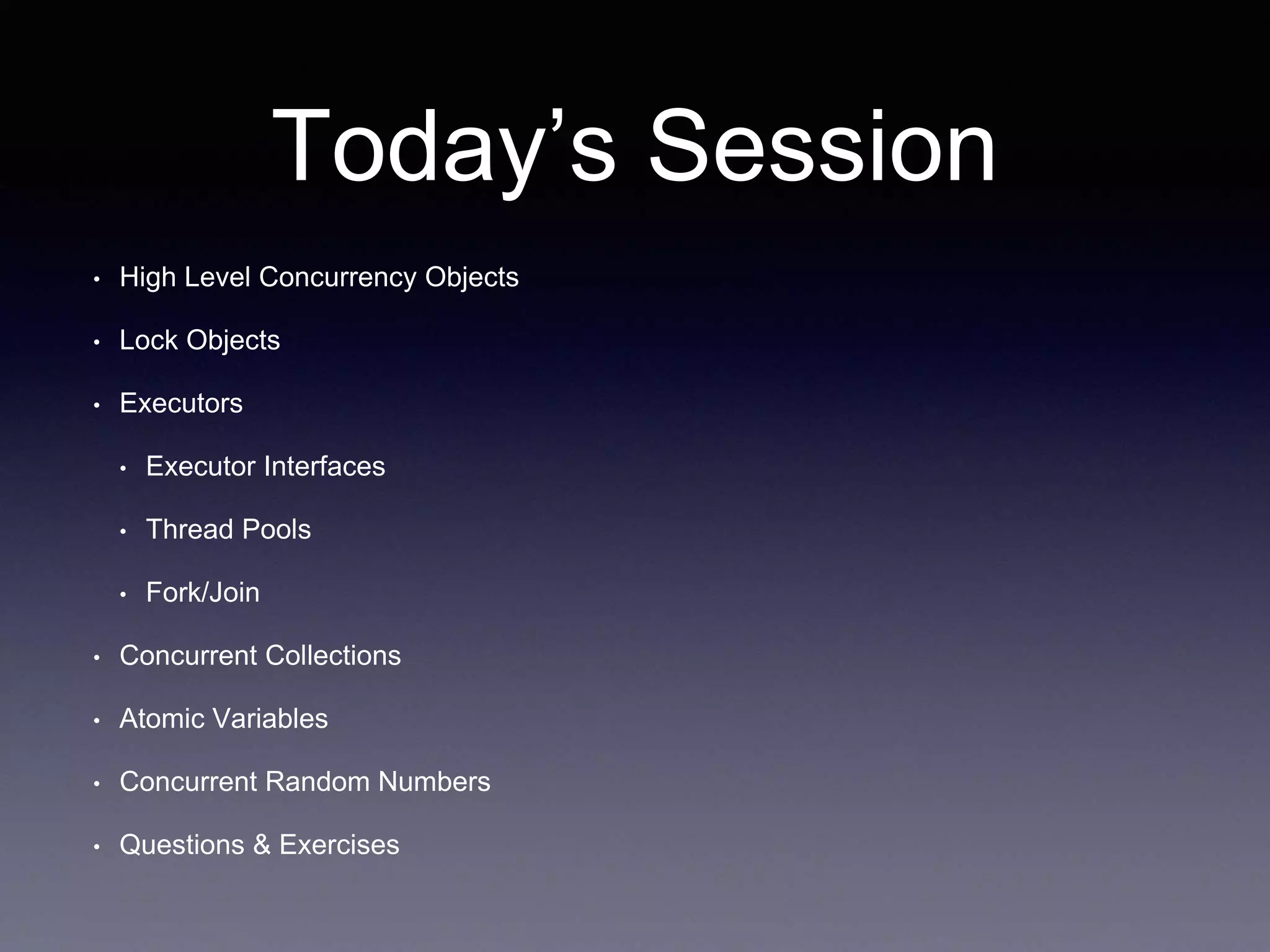

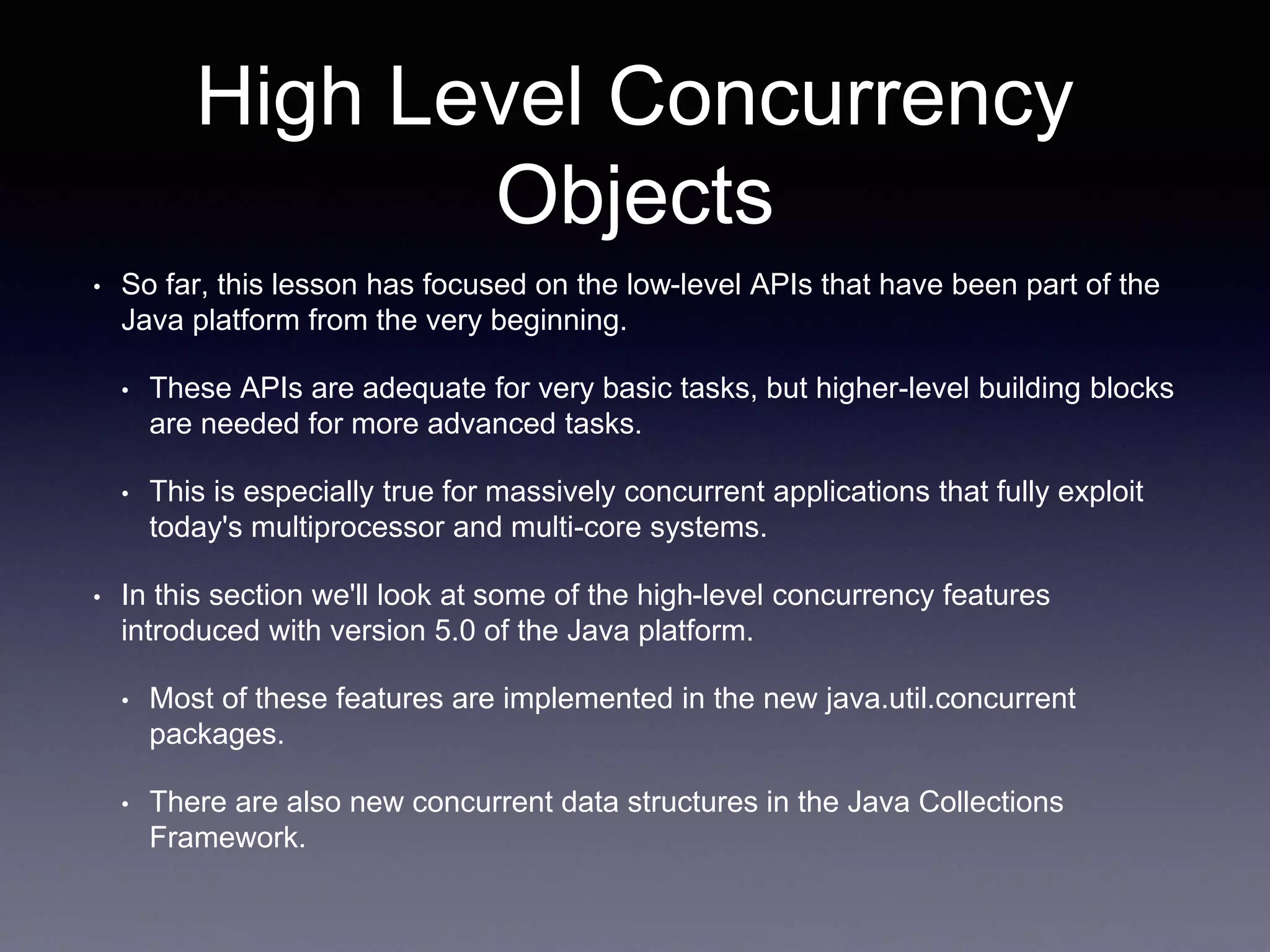


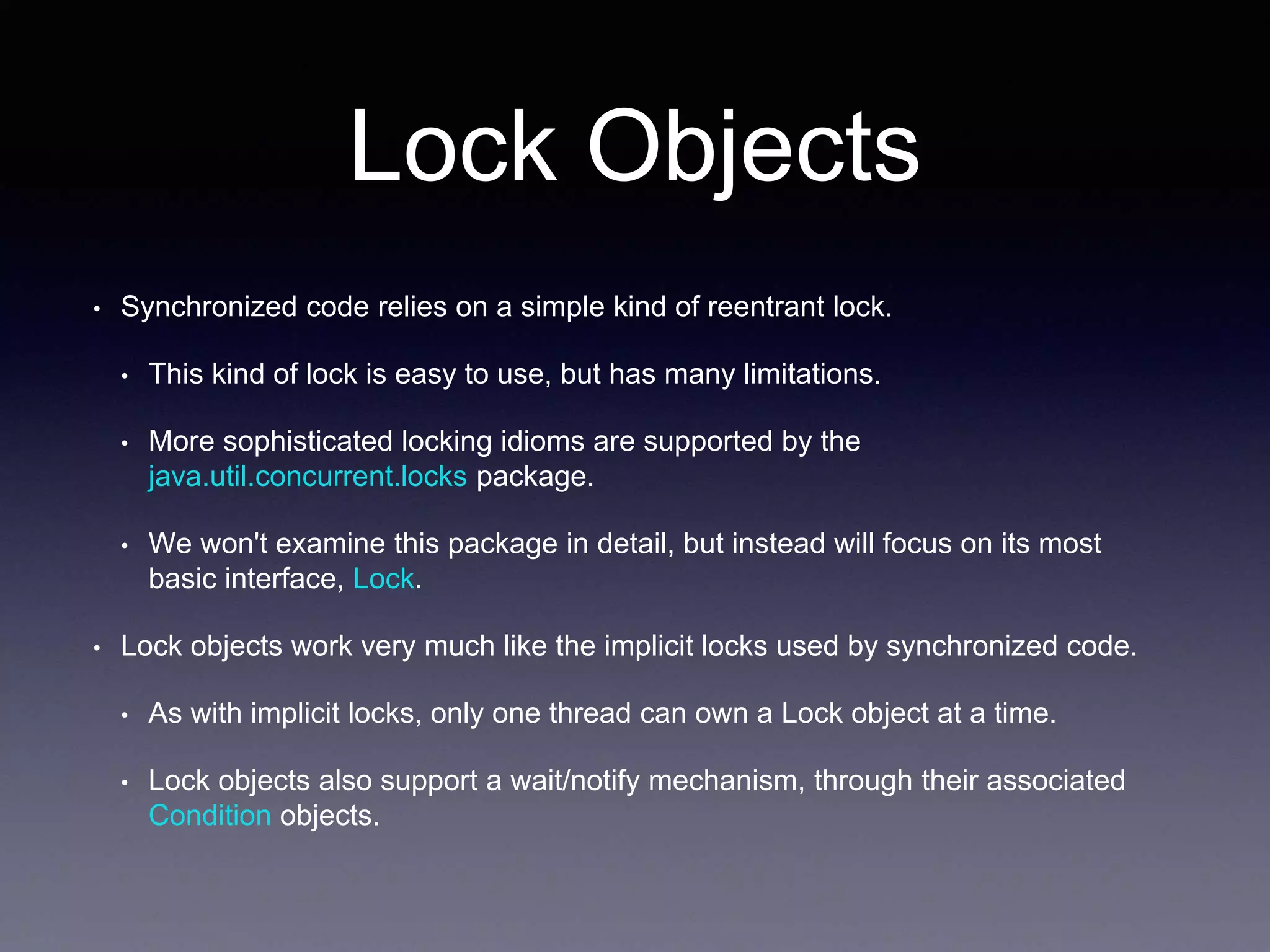

![Lock Objects Cont.d
import java.util.concurrent.locks.Lock;
import java.util.concurrent.locks.ReentrantLock;
import java.util.Random;
public class Safelock {
static class Friend {
private final String name;
private final Lock lock = new ReentrantLock();
public Friend(String name) {
this.name = name;
}
public String getName() {
return this.name;
}
public boolean impendingBow(Friend bower) {
Boolean myLock = false;
Boolean yourLock = false;
try {
myLock = lock.tryLock();
yourLock = bower.lock.tryLock();
} finally {
if (! (myLock && yourLock)) {
if (myLock) {
lock.unlock();
}
if (yourLock) {
bower.lock.unlock();
}
}
}
return myLock && yourLock;
}
public void bow(Friend bower) {
if (impendingBow(bower)) {
try {
System.out.format("%s: %s has"
+ " bowed to me!%n",
this.name, bower.getName());
bower.bowBack(this);
} finally {
lock.unlock();
bower.lock.unlock();
}
} else {
System.out.format("%s: %s started"
+ " to bow to me, but saw that"
+ " I was already bowing to"
+ " him.%n",
this.name, bower.getName());
}
}
public void bowBack(Friend bower) {
System.out.format("%s: %s has" +
" bowed back to me!%n",
this.name, bower.getName());
}
}
static class BowLoop implements Runnable {
private Friend bower;
private Friend bowee;
public BowLoop(Friend bower, Friend bowee) {
this.bower = bower;
this.bowee = bowee;
}
public void run() {
Random random = new Random();
for (;;) {
try {
Thread.sleep(random.nextInt(10));
} catch (InterruptedException e) {}
bowee.bow(bower);
}
}
}
public static void main(String[] args) {
final Friend alphonse =
new Friend("Alphonse");
final Friend gaston =
new Friend("Gaston");
new Thread(new BowLoop(alphonse, gaston)).start();
new Thread(new BowLoop(gaston, alphonse)).start();
}
}](https://image.slidesharecdn.com/cp-07-151011044016-lva1-app6891/75/Concurrency-Programming-in-Java-07-High-level-Concurrency-objects-Lock-Objects-Executors-Concurrent-Collections-Atomic-Variables-Concurrent-Random-Numbers-13-2048.jpg)

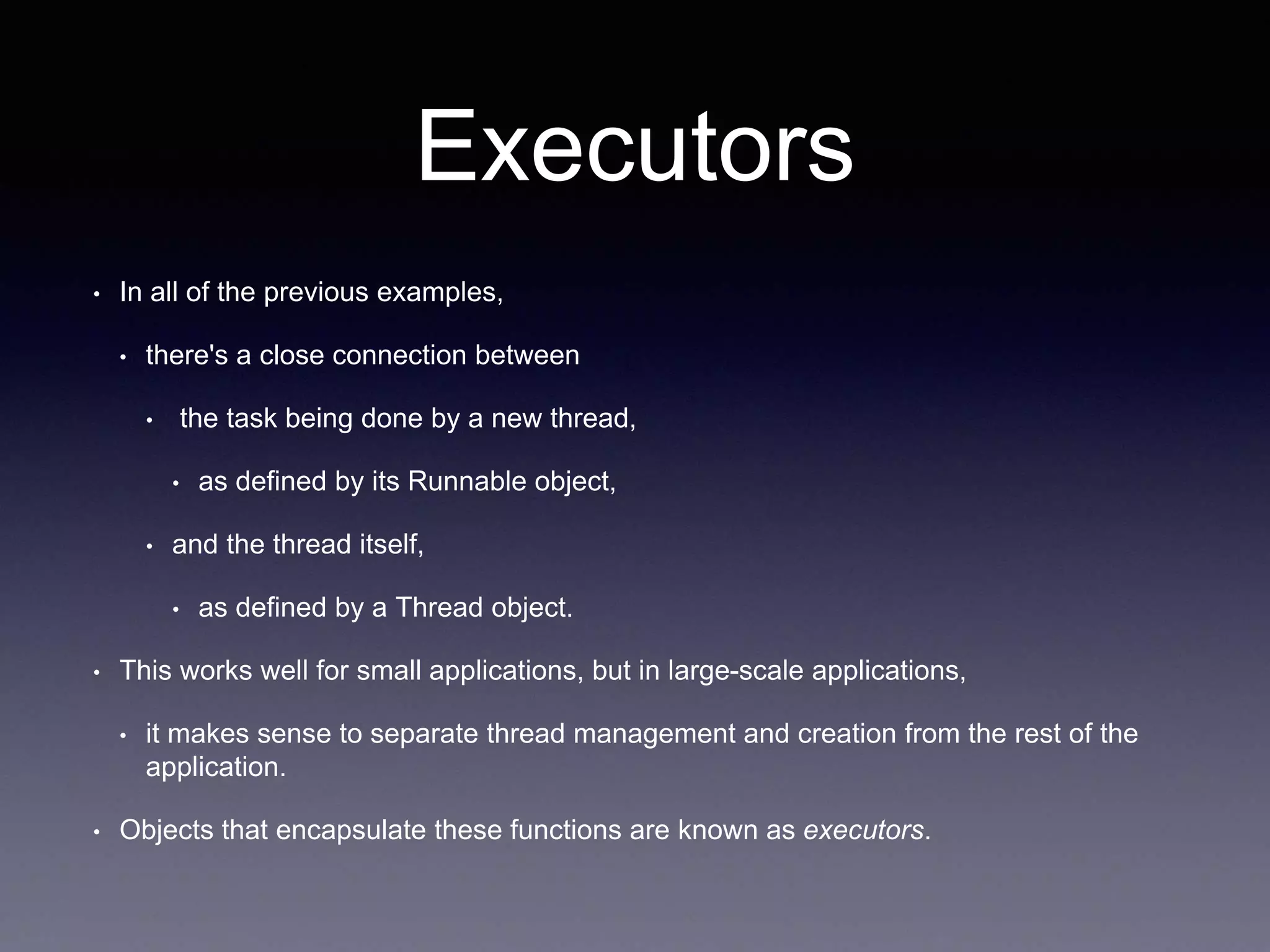
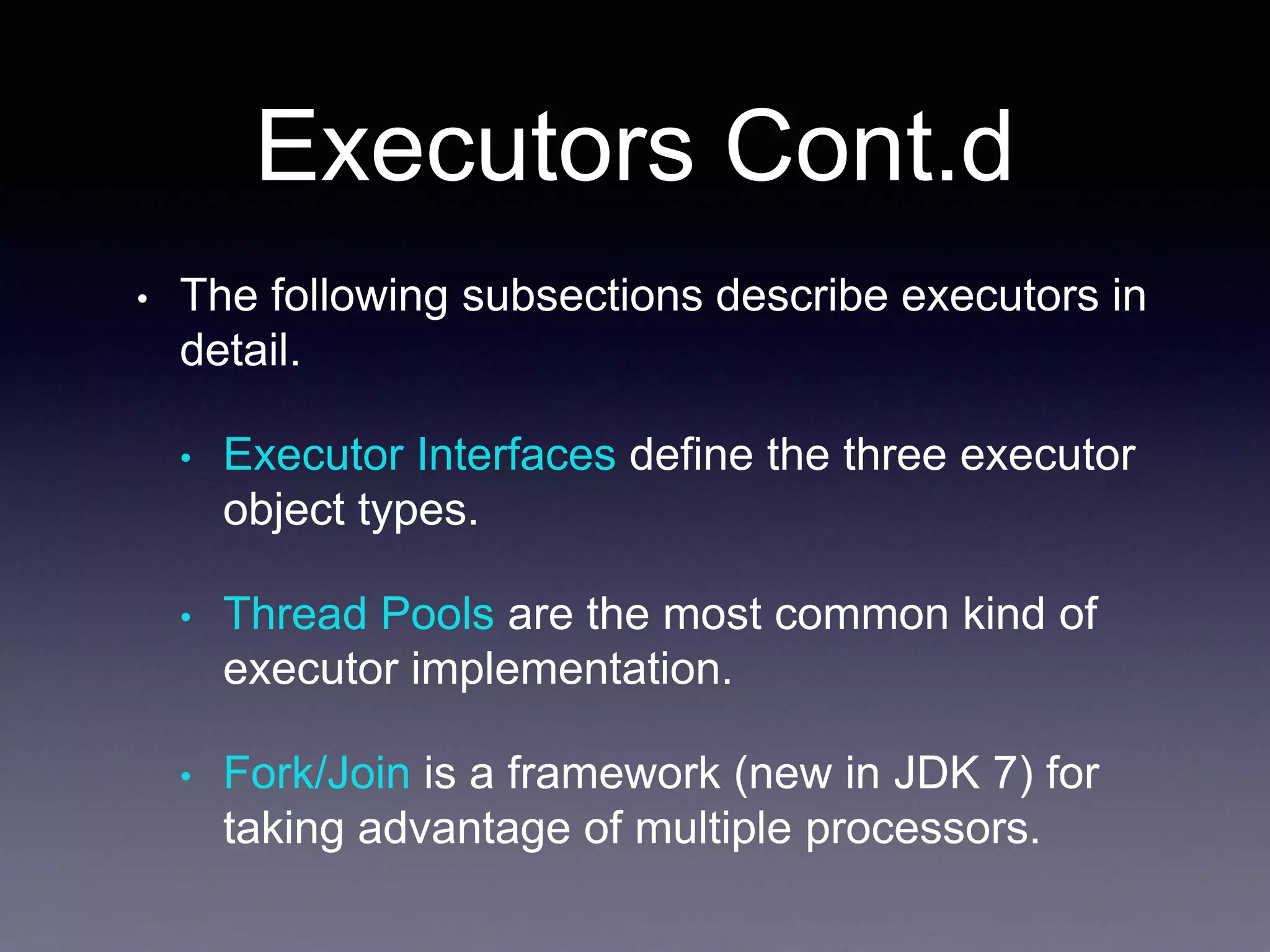
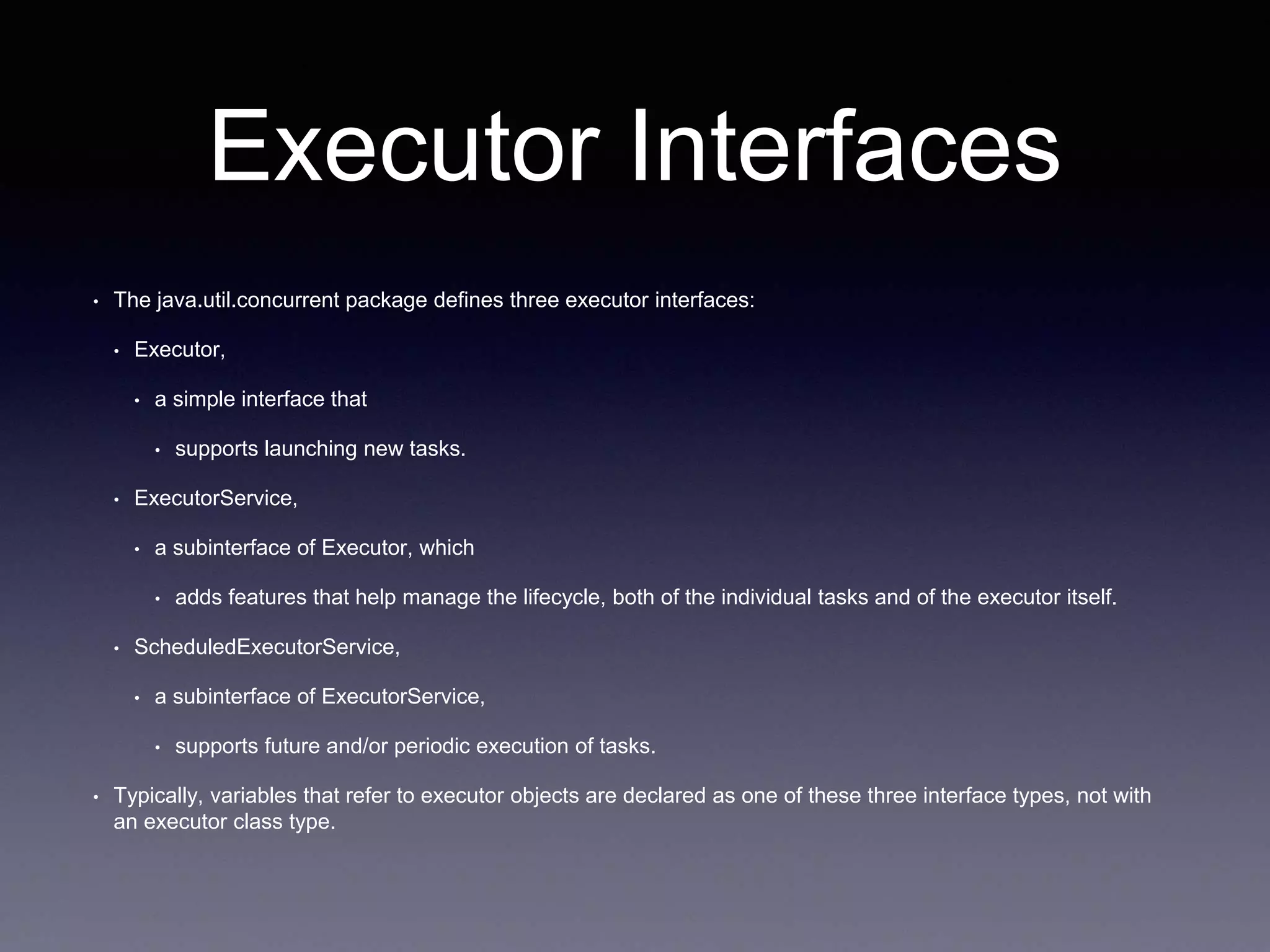
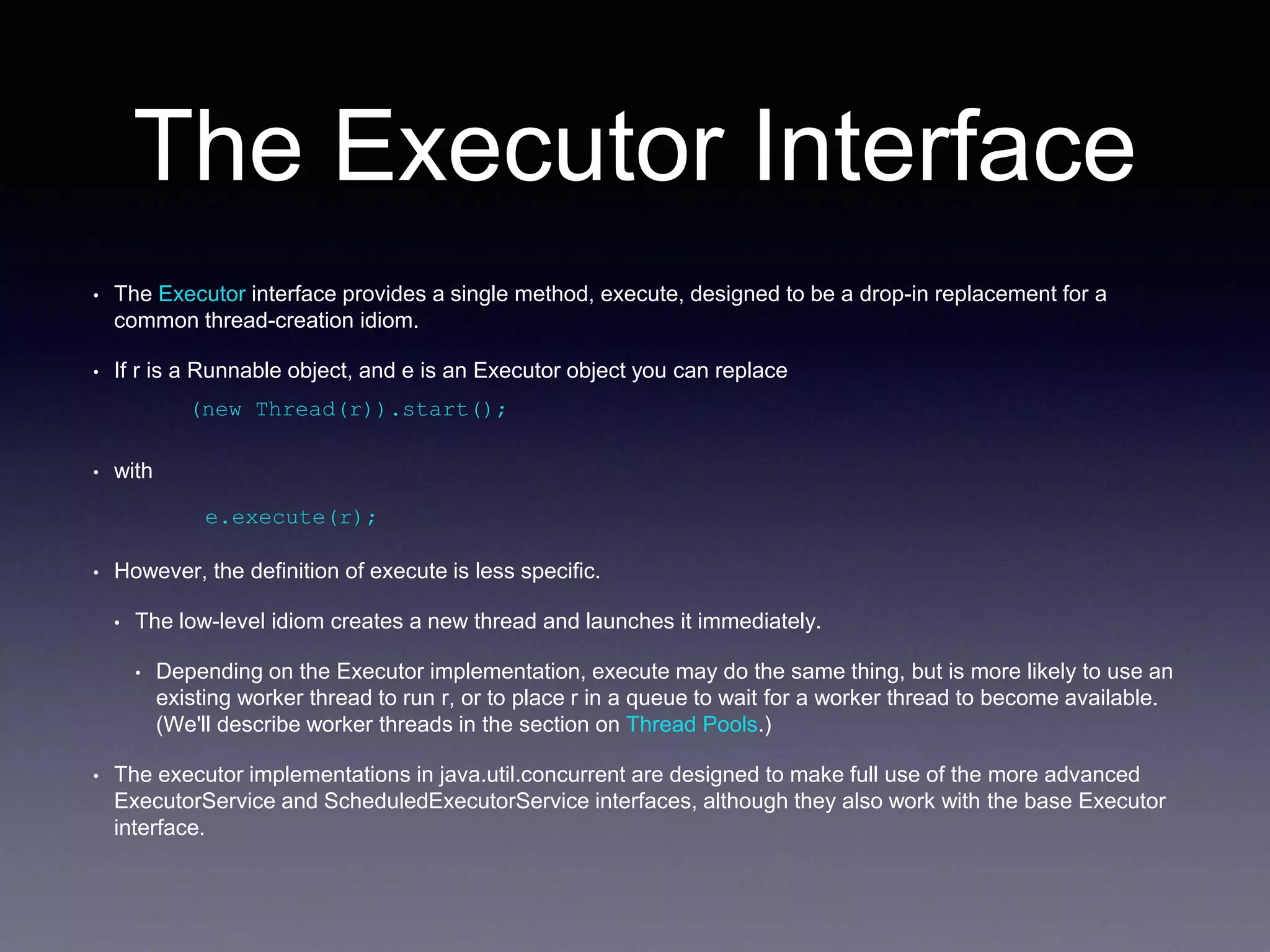
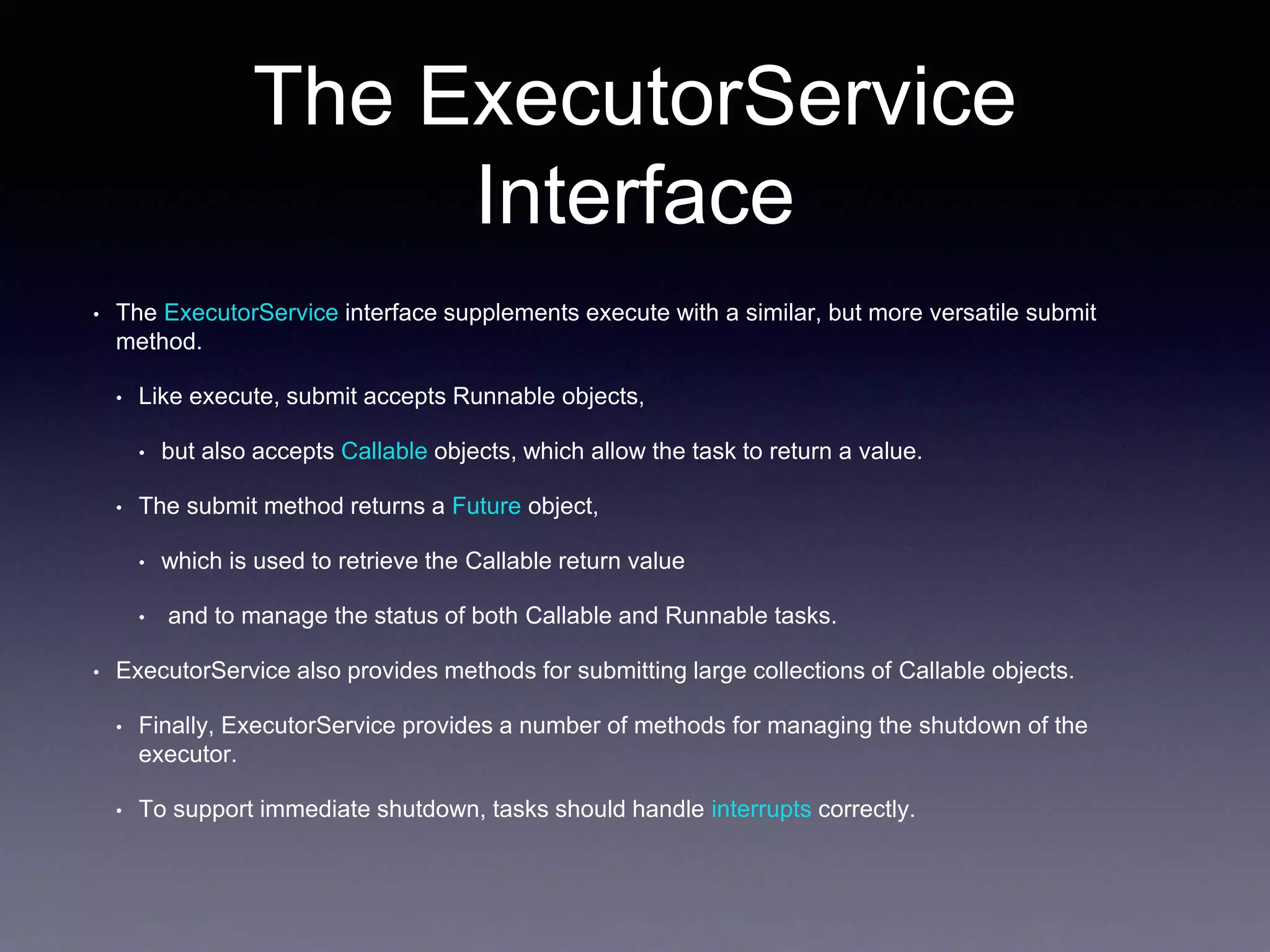
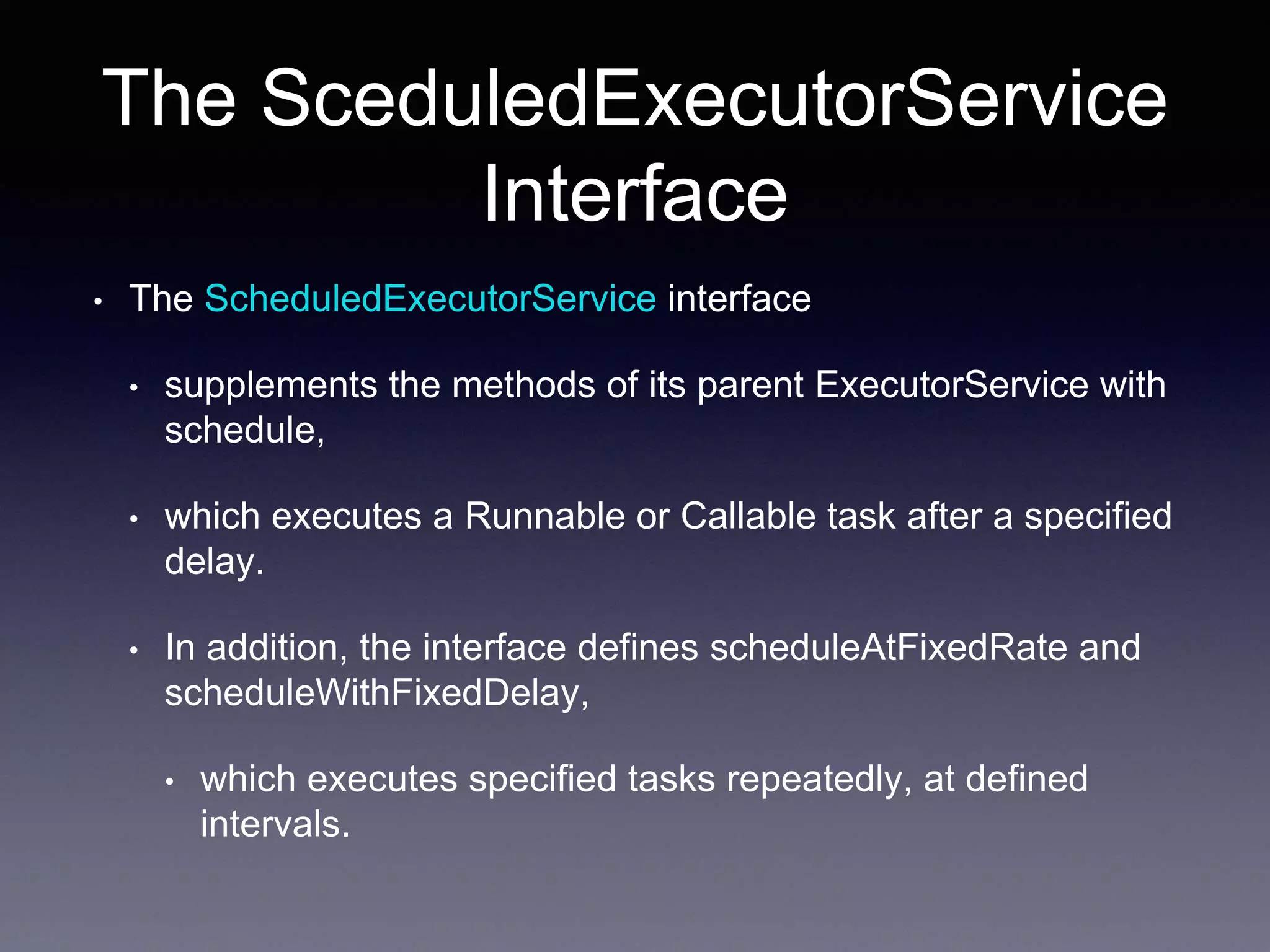

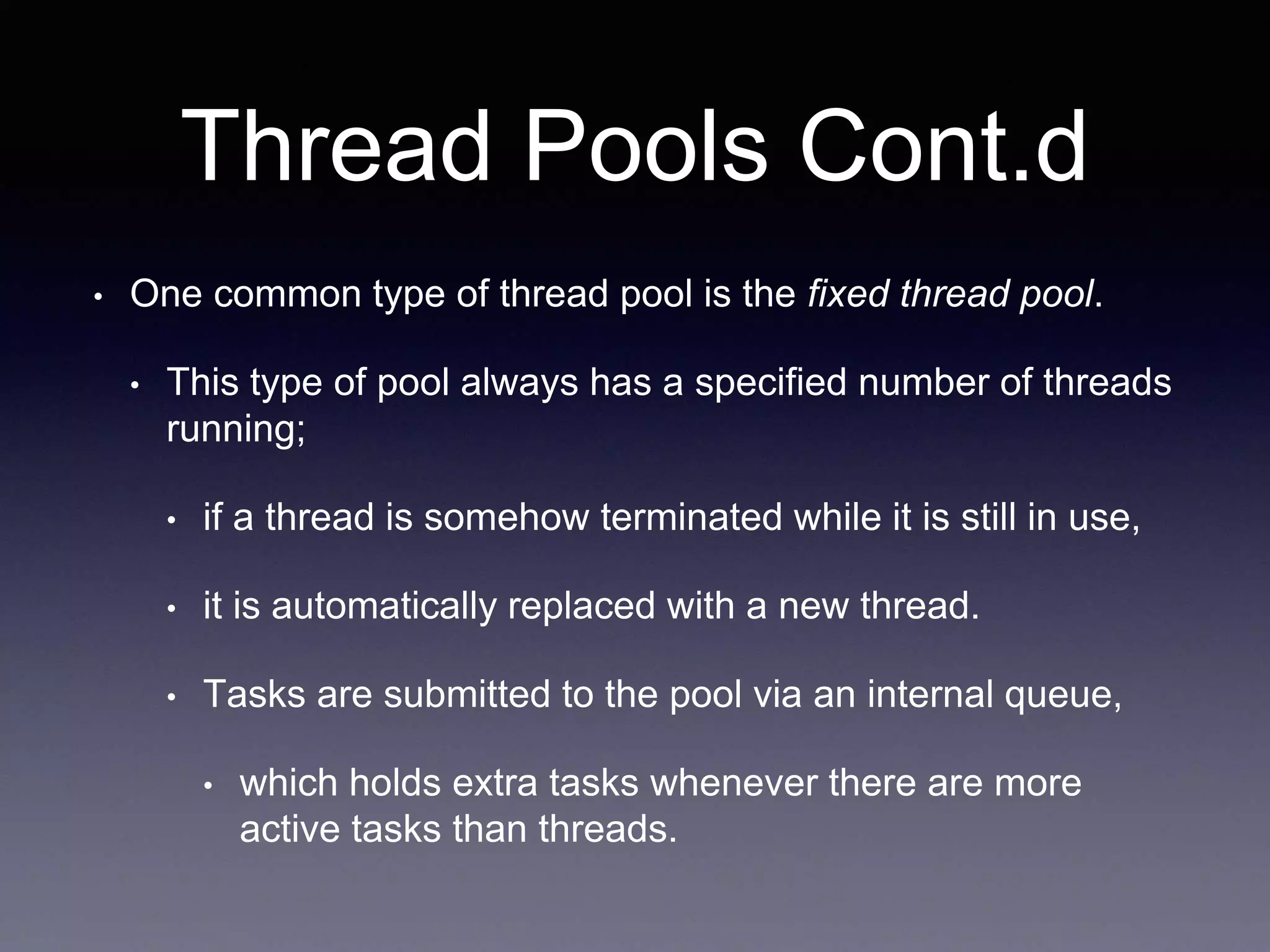
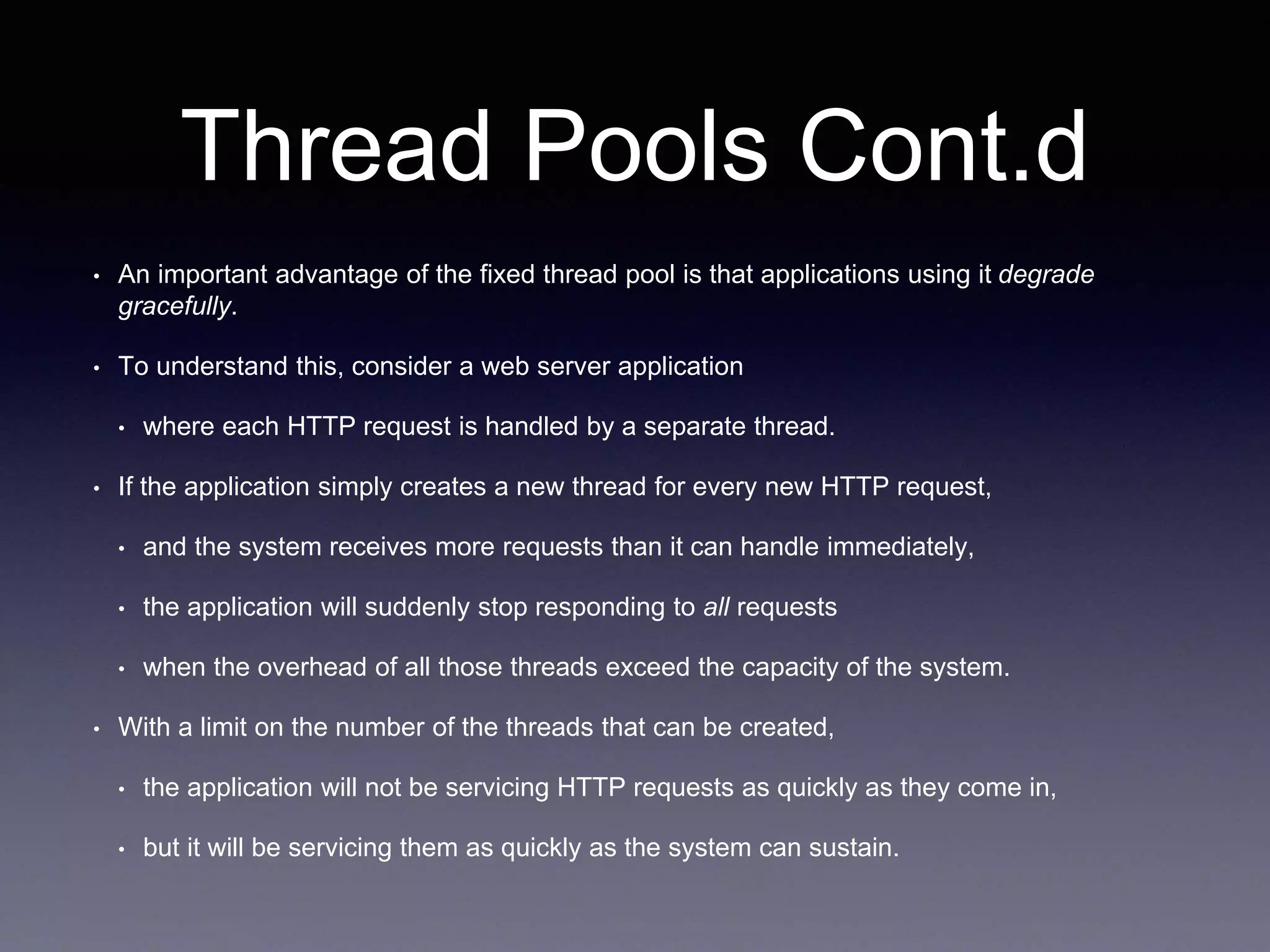
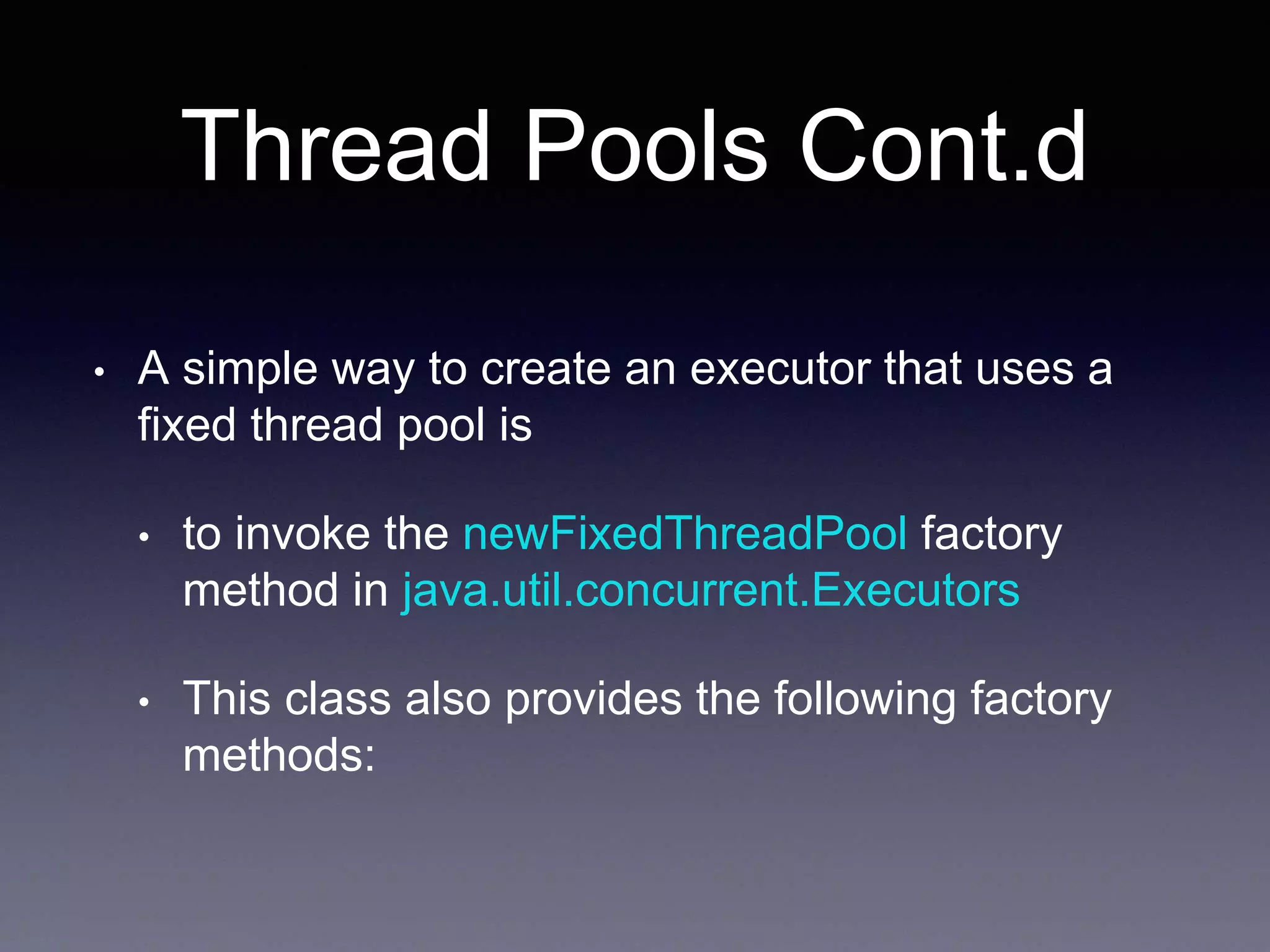
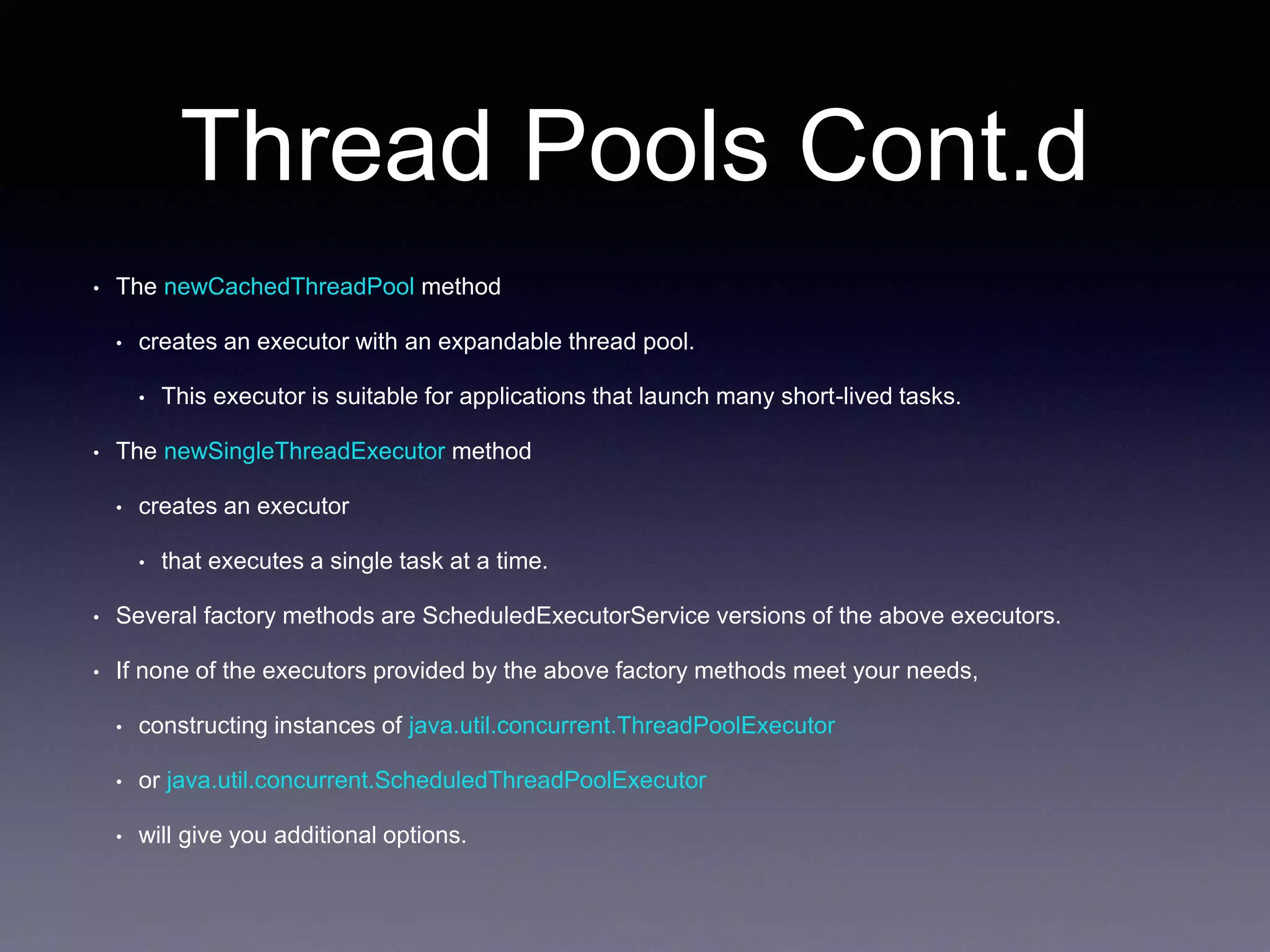
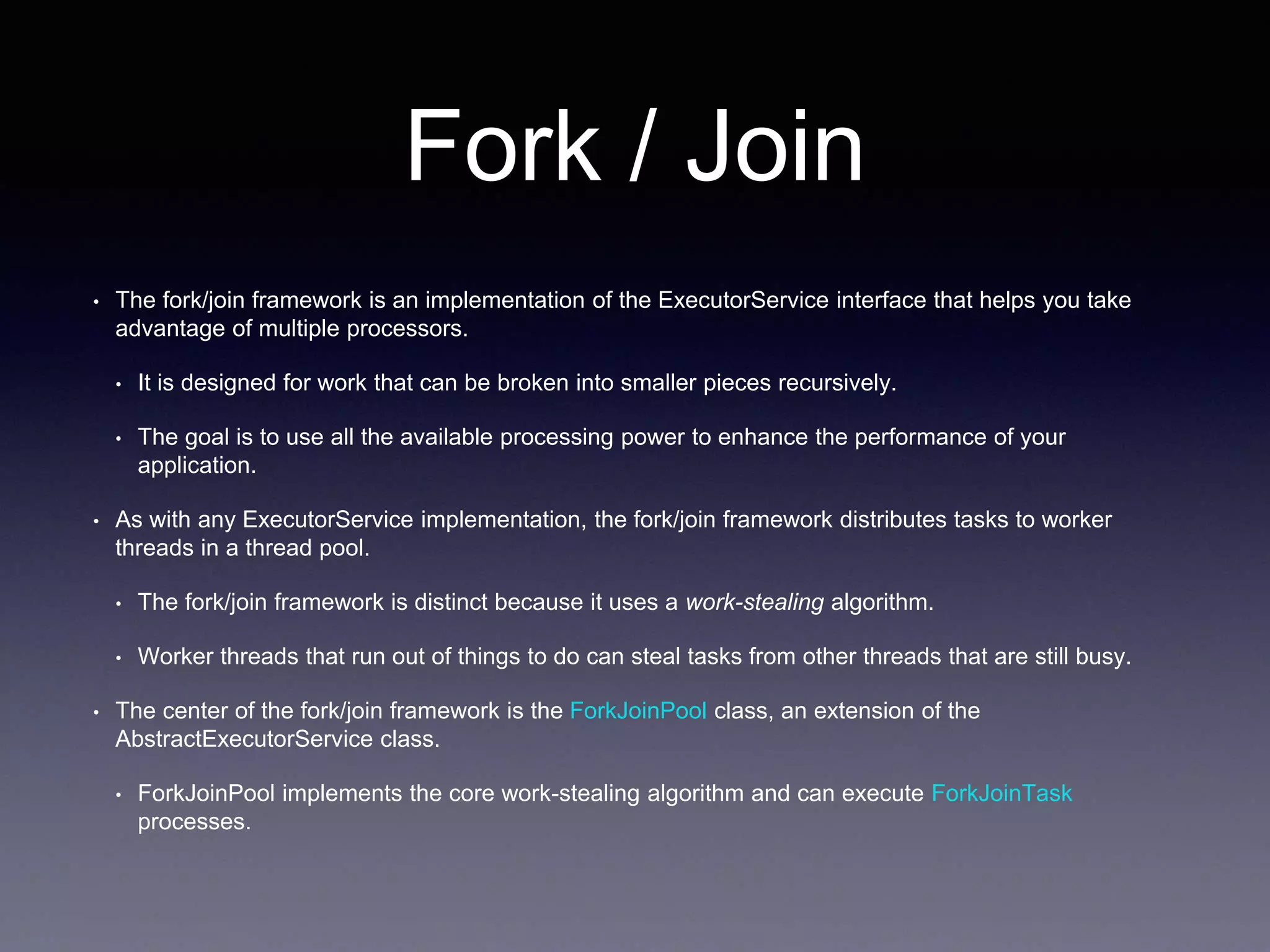
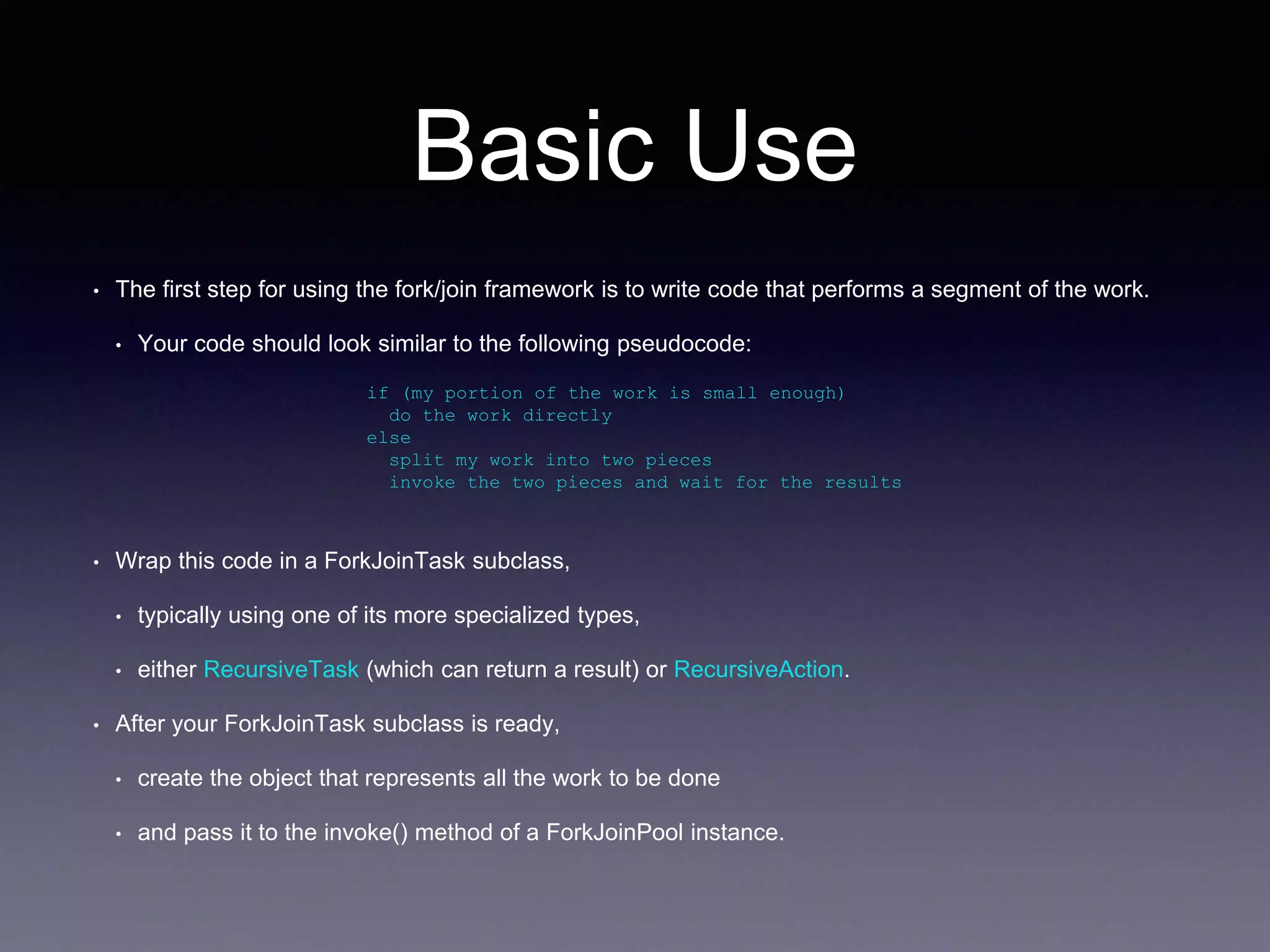
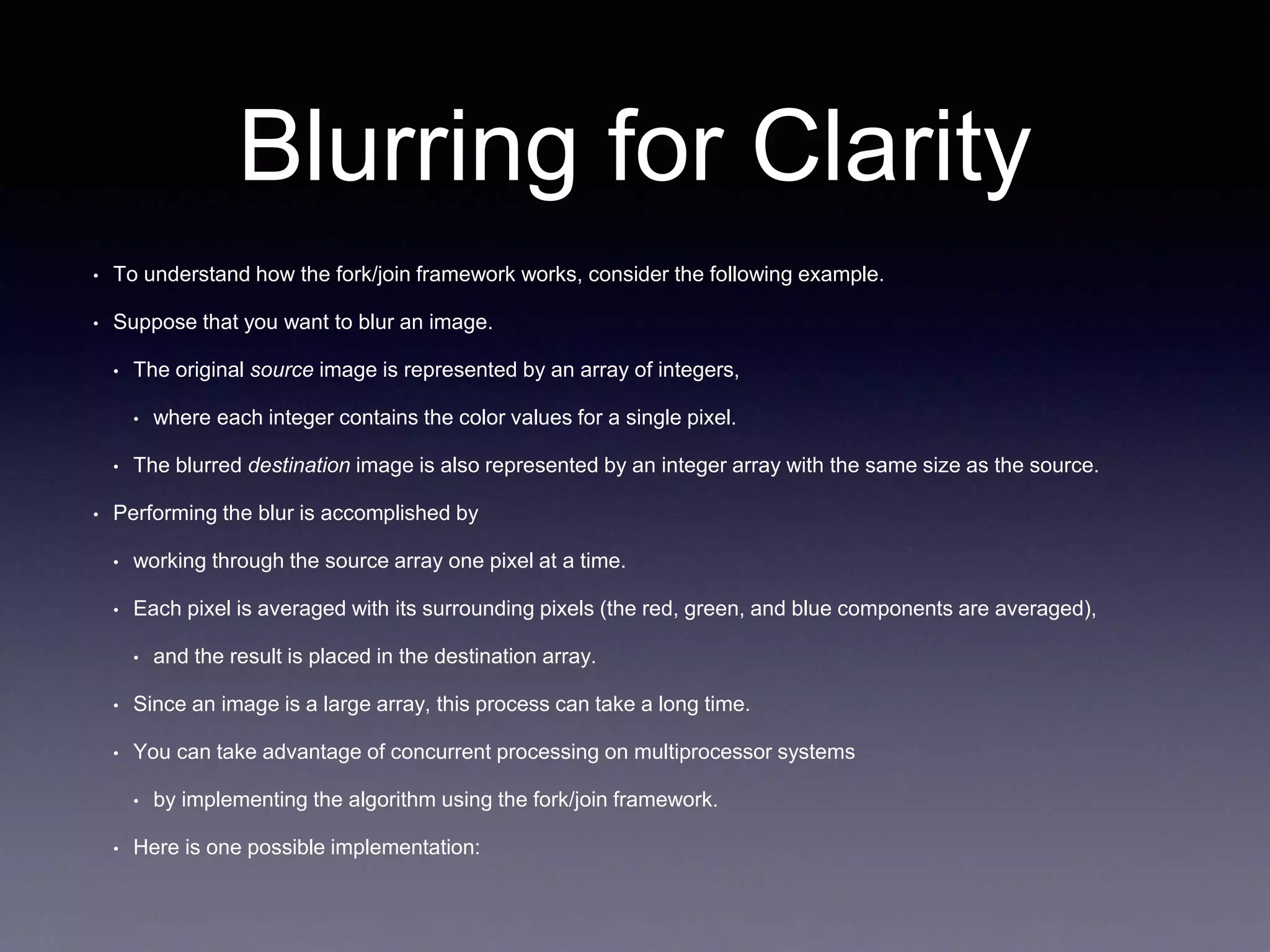
![Blurring for Clarity Cont.dpublic class ForkBlur extends RecursiveAction {
private int[] mSource;
private int mStart;
private int mLength;
private int[] mDestination;
// Processing window size; should be odd.
private int mBlurWidth = 15;
public ForkBlur(int[] src, int start, int length, int[] dst) {
mSource = src;
mStart = start;
mLength = length;
mDestination = dst;
}
protected void computeDirectly() {
int sidePixels = (mBlurWidth - 1) / 2;
for (int index = mStart; index < mStart + mLength; index++) {
// Calculate average.
float rt = 0, gt = 0, bt = 0;
for (int mi = -sidePixels; mi <= sidePixels; mi++) {
int mindex = Math.min(Math.max(mi + index, 0),
mSource.length - 1);
int pixel = mSource[mindex];
rt += (float)((pixel & 0x00ff0000) >> 16)
/ mBlurWidth;
gt += (float)((pixel & 0x0000ff00) >> 8)
/ mBlurWidth;
bt += (float)((pixel & 0x000000ff) >> 0)
/ mBlurWidth;
}
// Reassemble destination pixel.
int dpixel = (0xff000000 ) |
(((int)rt) << 16) |
(((int)gt) << 8) |
(((int)bt) << 0);
mDestination[index] = dpixel;
}
}
…](https://image.slidesharecdn.com/cp-07-151011044016-lva1-app6891/75/Concurrency-Programming-in-Java-07-High-level-Concurrency-objects-Lock-Objects-Executors-Concurrent-Collections-Atomic-Variables-Concurrent-Random-Numbers-29-2048.jpg)
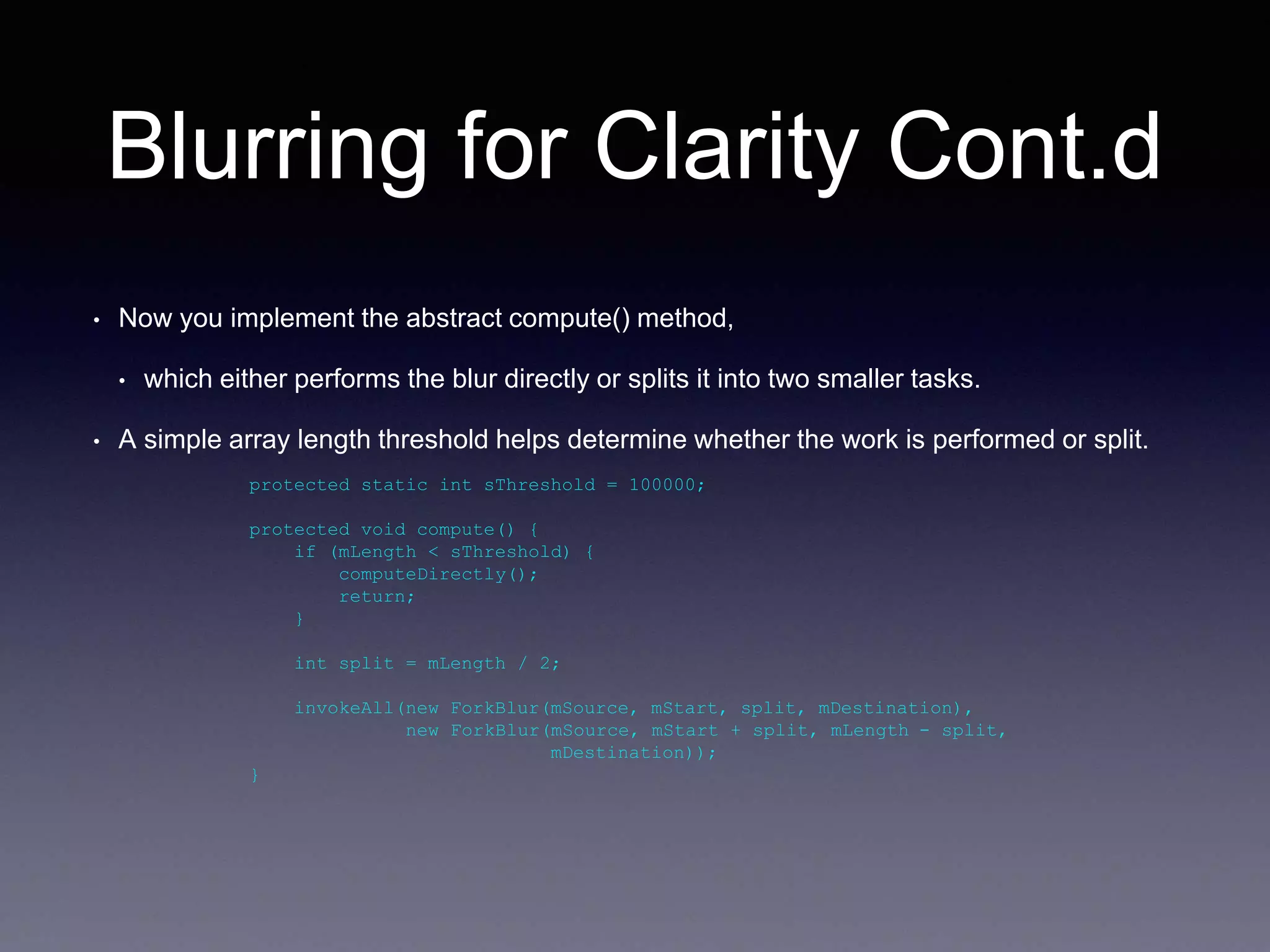

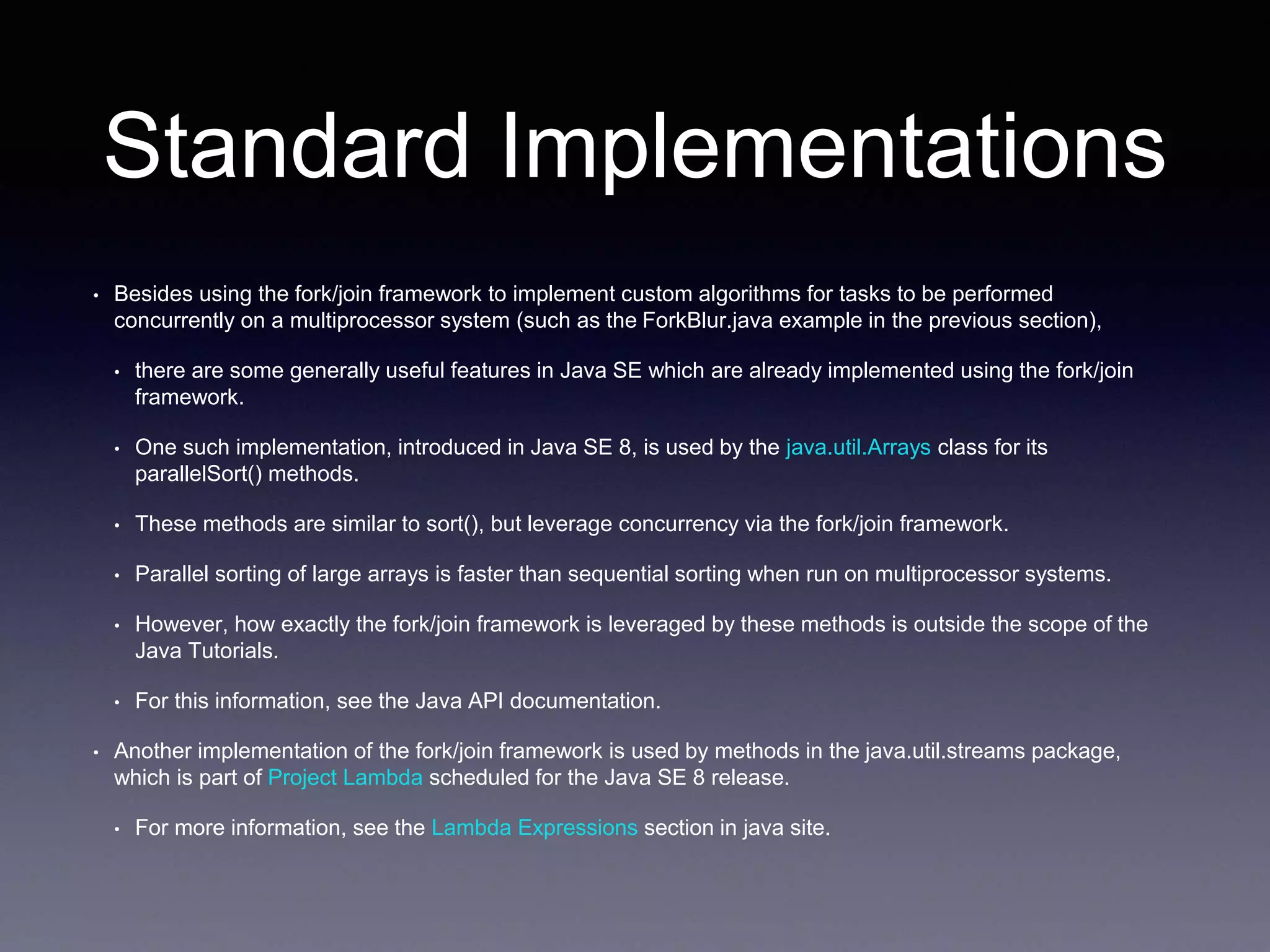




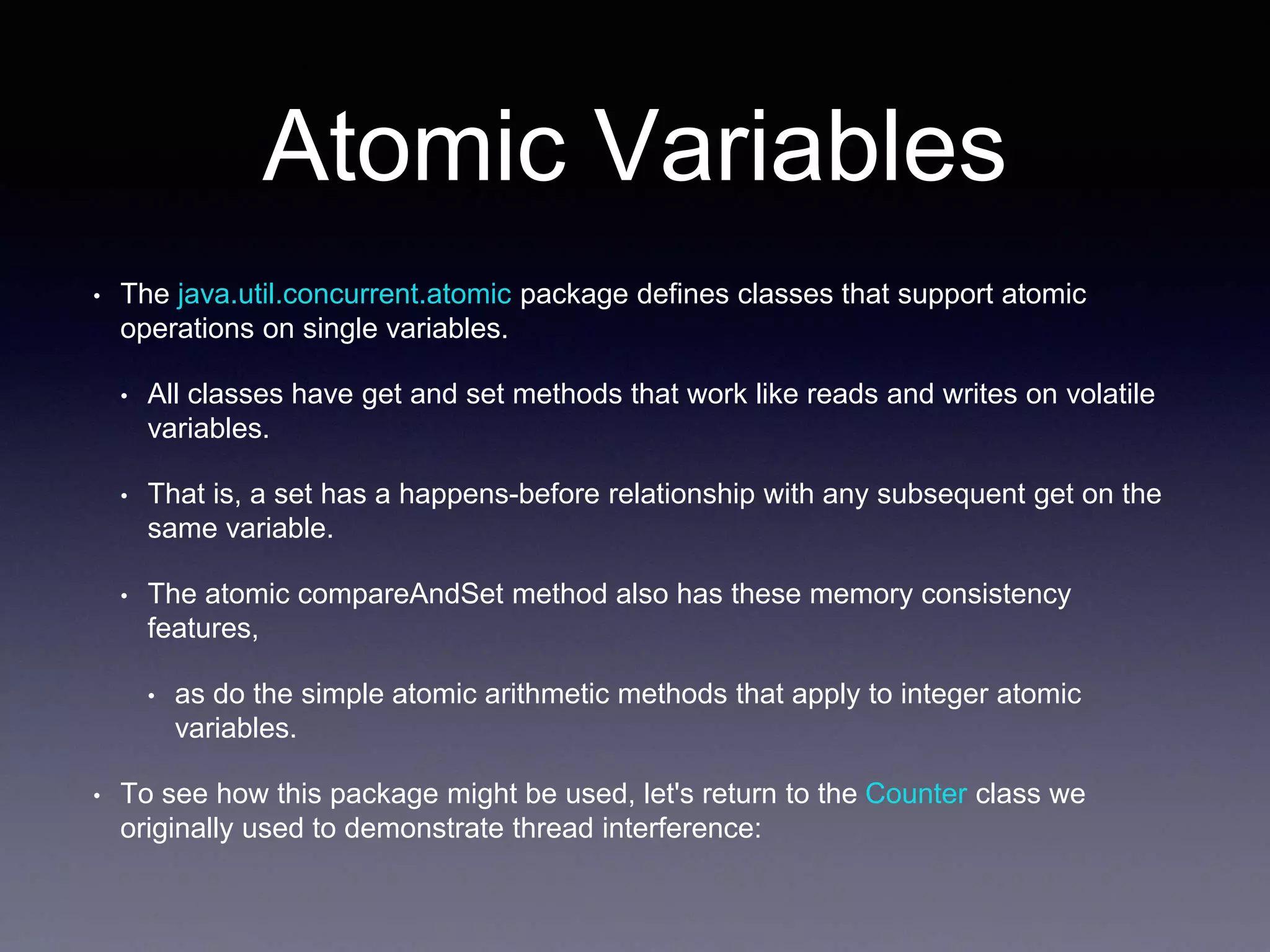

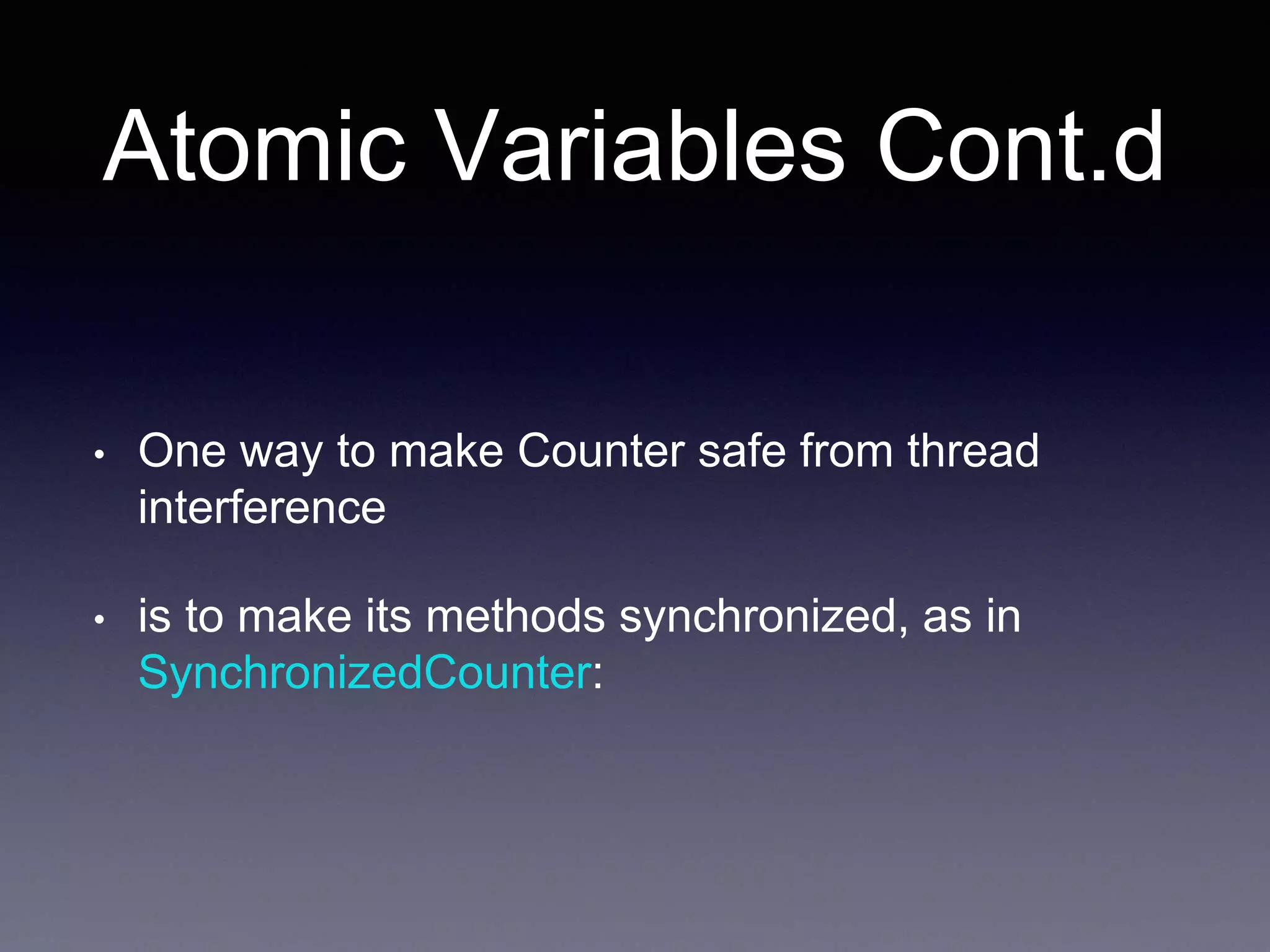
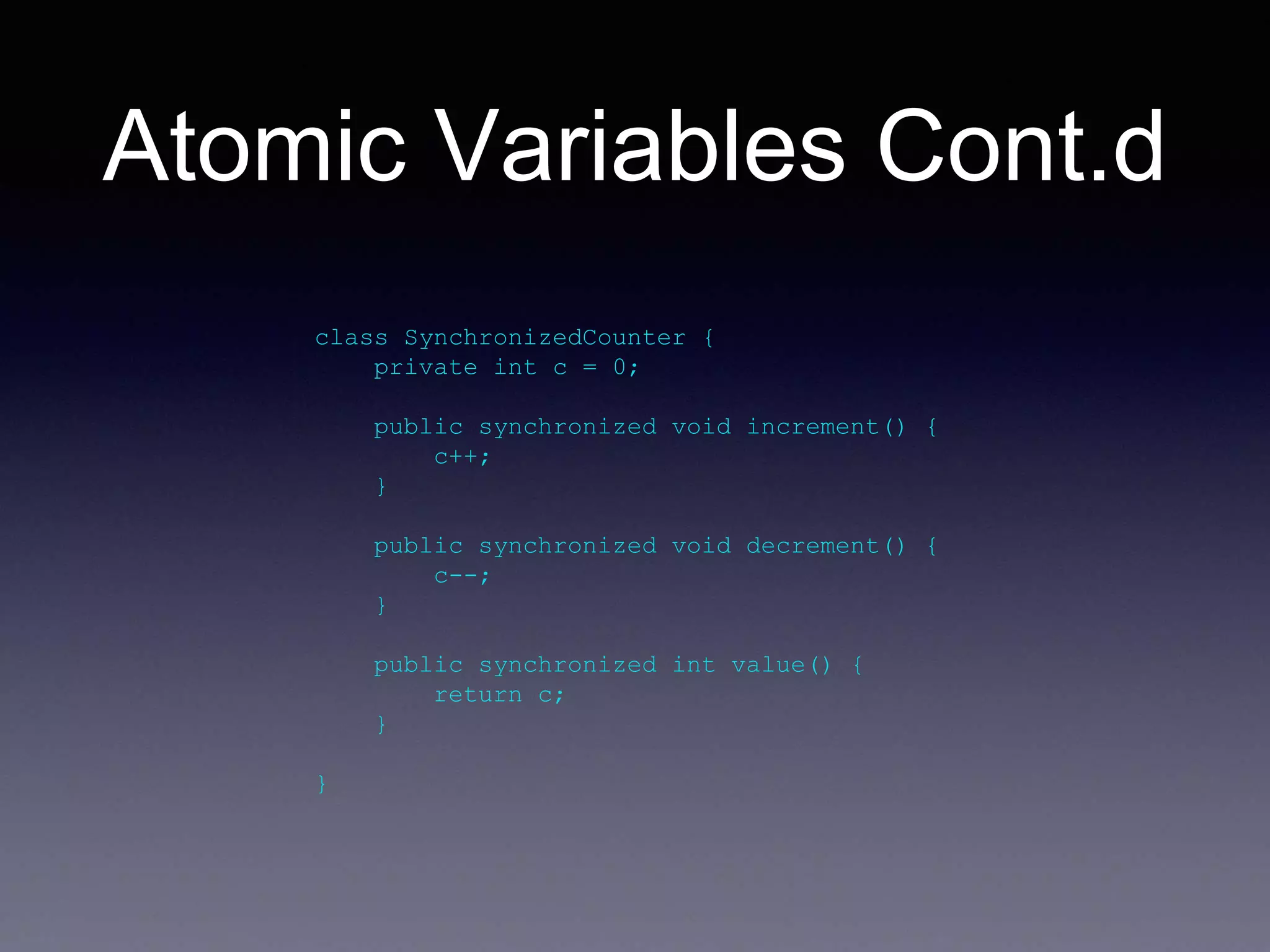
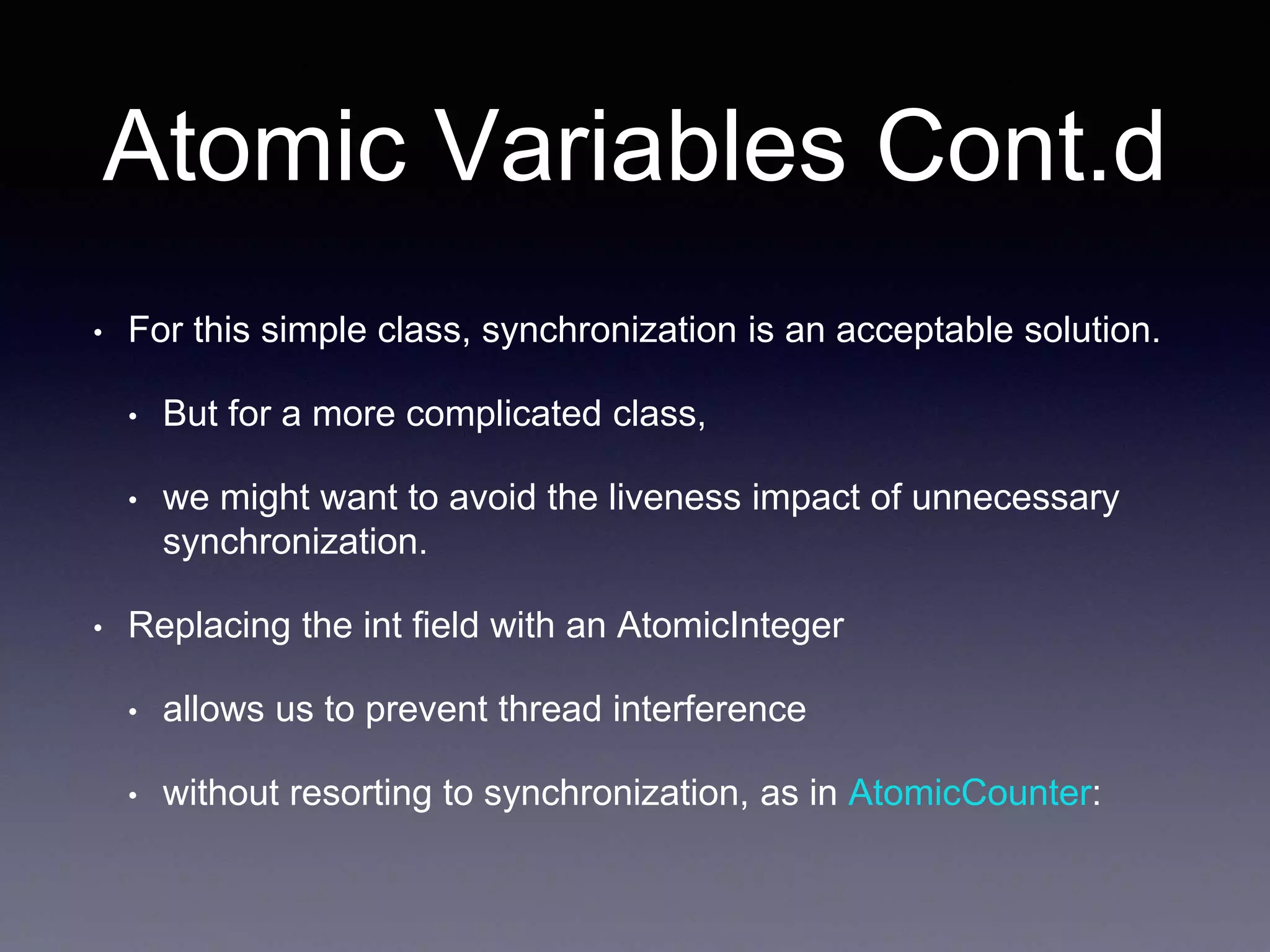
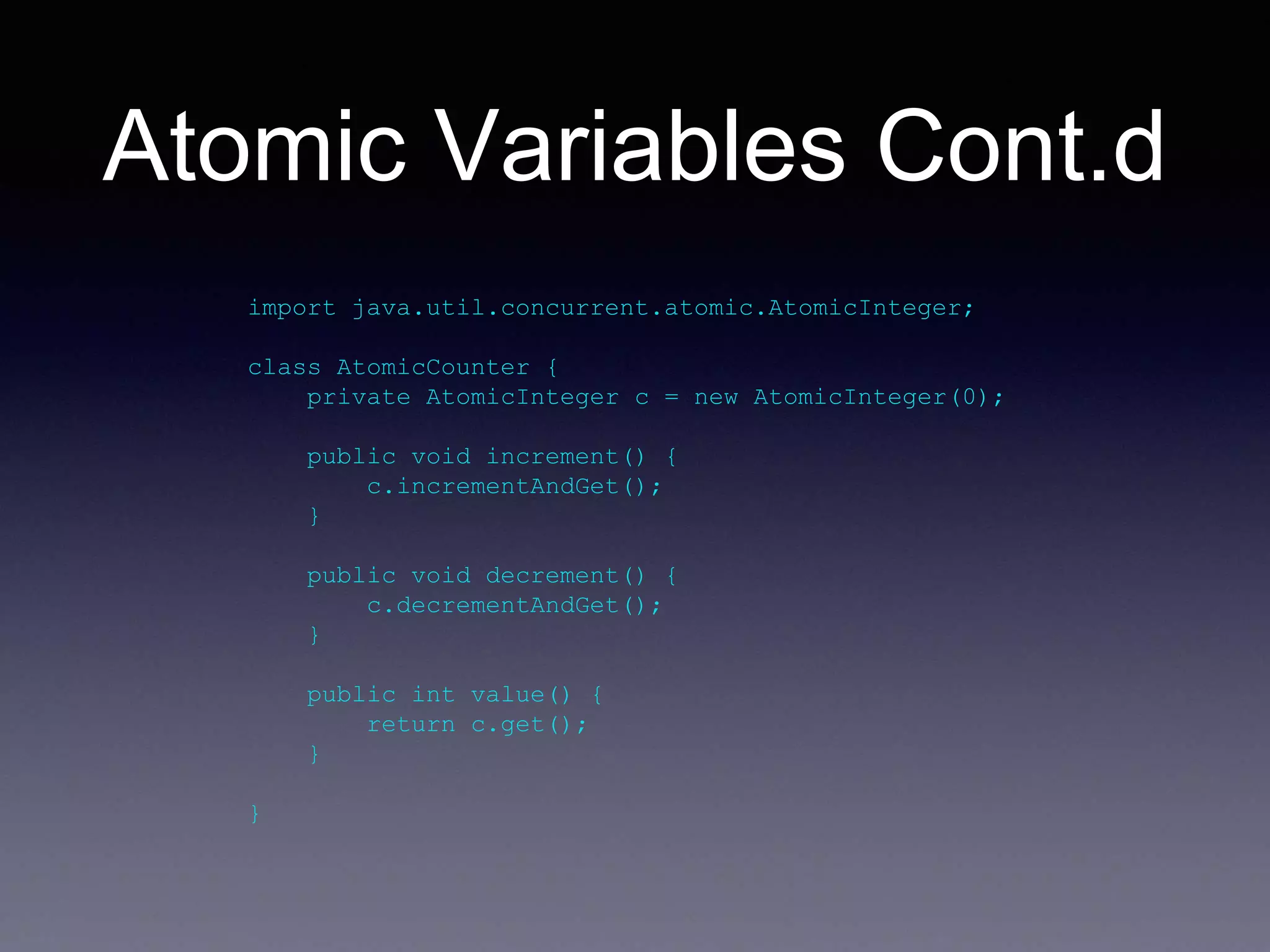

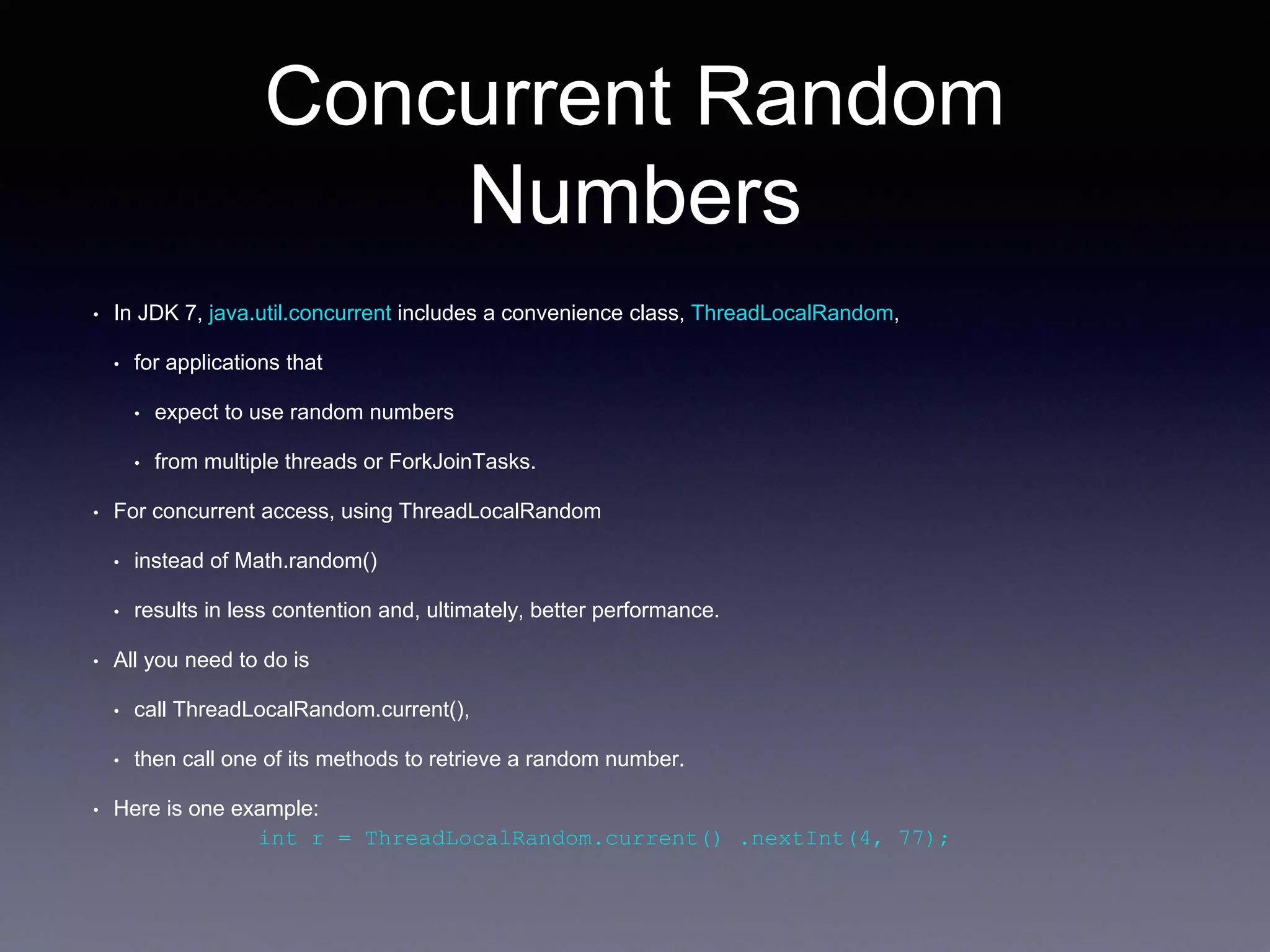

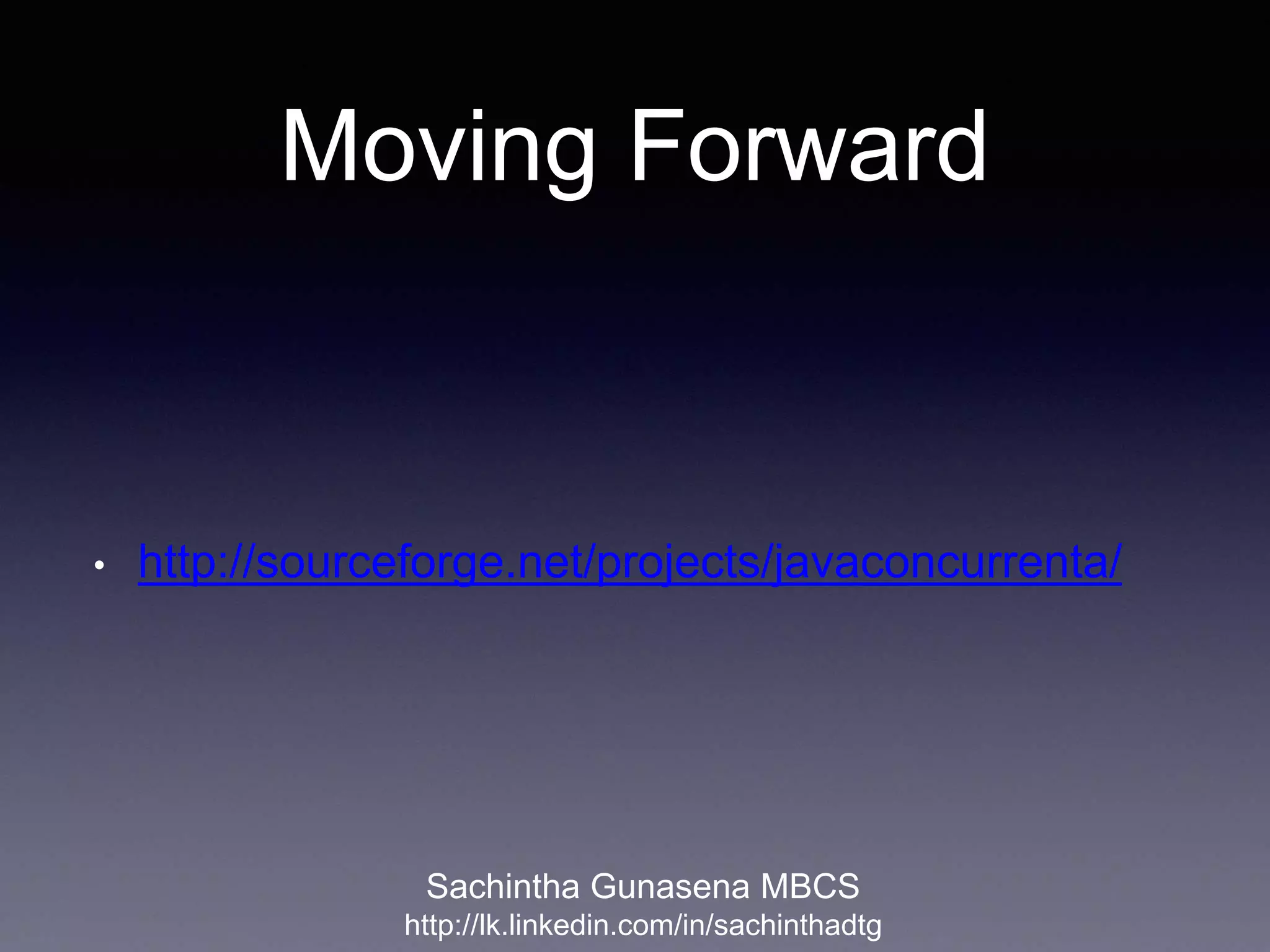

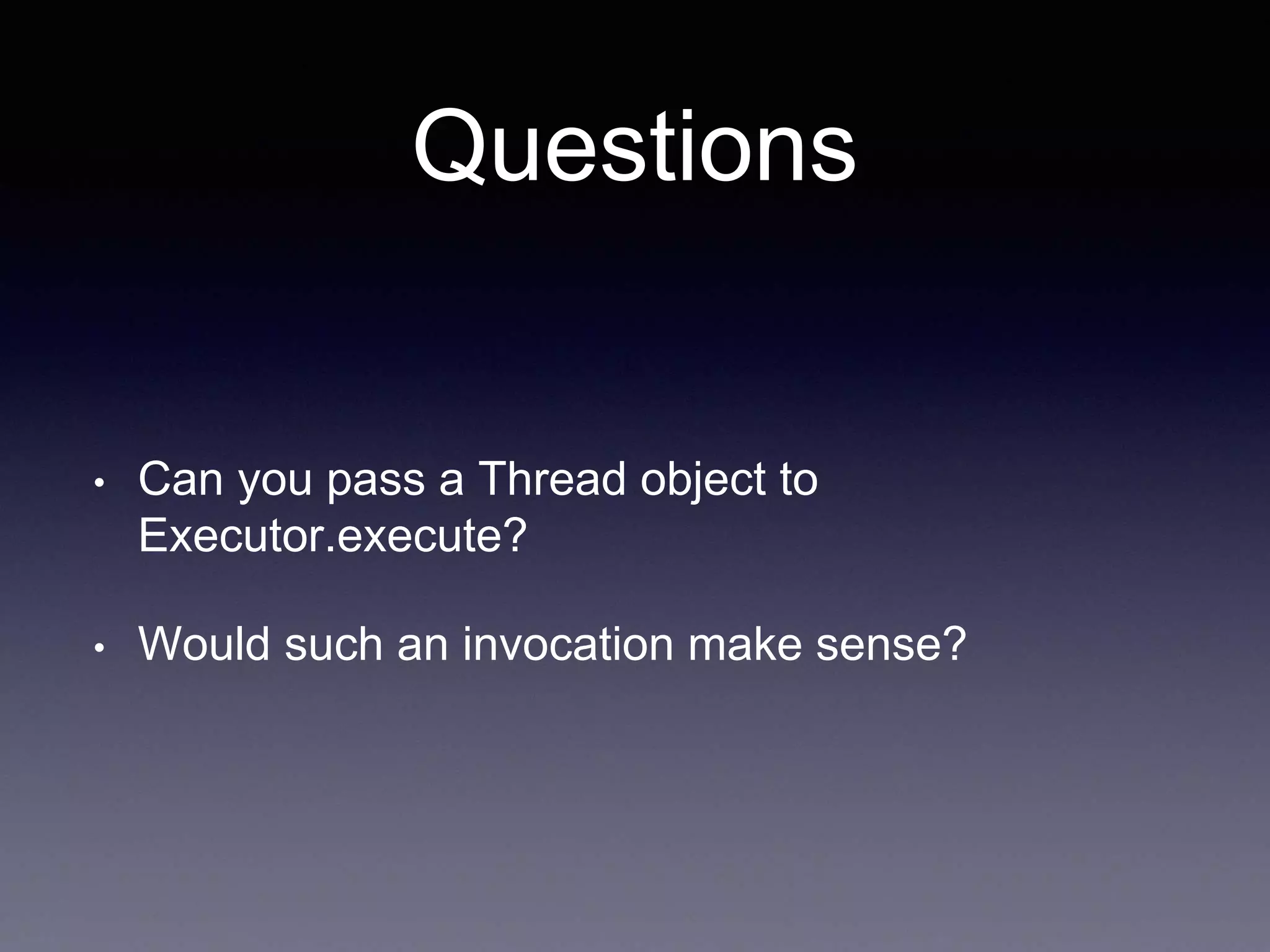
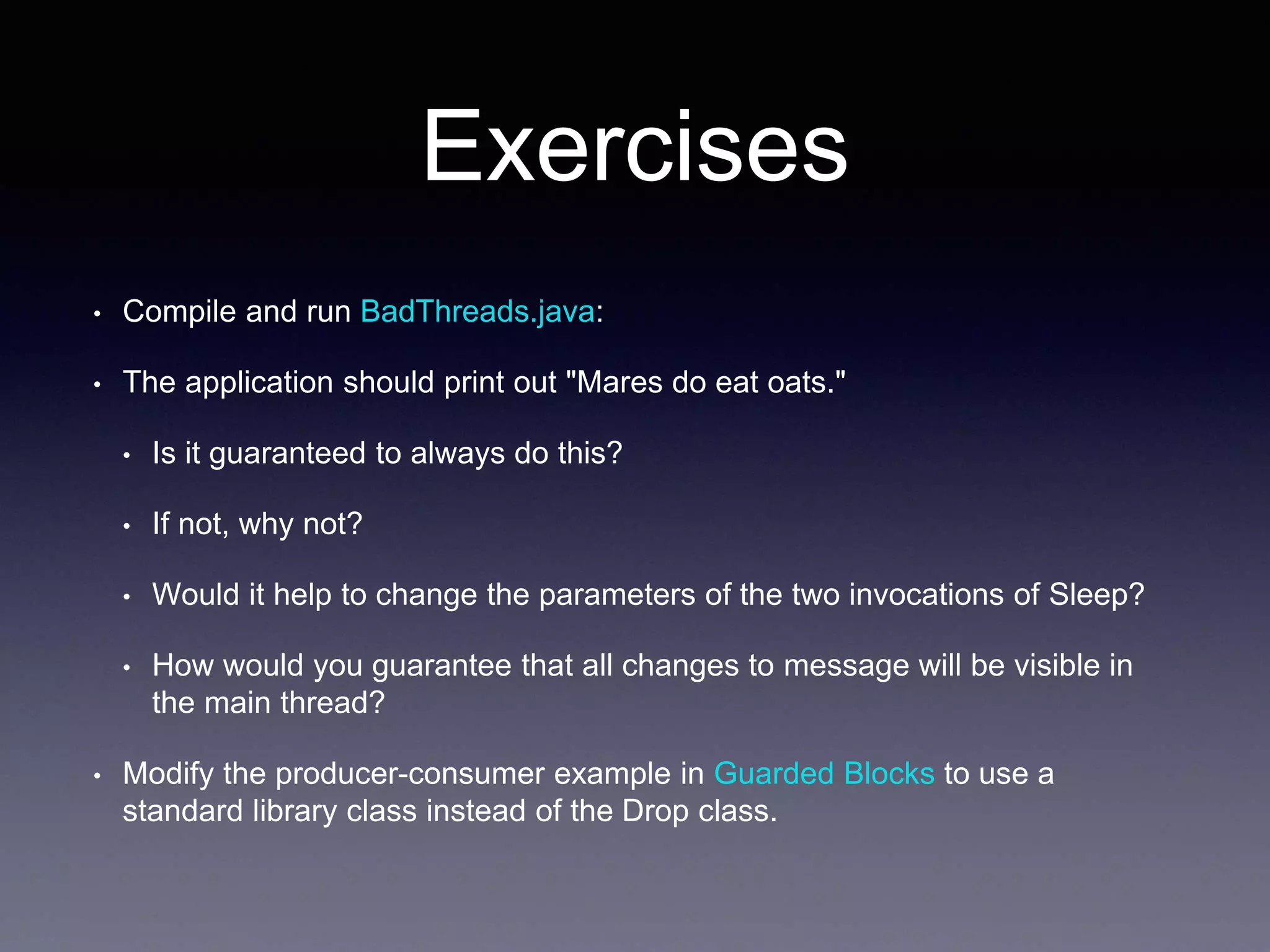
![Exercisespublic class BadThreads {
static String message;
private static class CorrectorThread
extends Thread {
public void run() {
try {
sleep(1000);
} catch (InterruptedException e) {}
// Key statement 1:
message = "Mares do eat oats.";
}
}
public static void main(String args[])
throws InterruptedException {
(new CorrectorThread()).start();
message = "Mares do not eat oats.";
Thread.sleep(2000);
// Key statement 2:
System.out.println(message);
}
}](https://image.slidesharecdn.com/cp-07-151011044016-lva1-app6891/75/Concurrency-Programming-in-Java-07-High-level-Concurrency-objects-Lock-Objects-Executors-Concurrent-Collections-Atomic-Variables-Concurrent-Random-Numbers-50-2048.jpg)
